by Ed Sawicki
December 28, 2023
Drones and cruise missiles built by the Islamic Revolutionary Guard Corps (IRGC) in Iran and by the Houthis in Yemen are being used in the Russia-Ukraine War*, by the Houthis attacking shipping in the Persian Gulf, by the Houthis attacking Saudi Arabia, and, recently, against U.S. forces in Iraq. These can be built in relatively large numbers because they use commercial off-the-shelf components from numerous companies in the West, India, China, etc.
* Russia is using drones against Ukraine that it purchases from Iran.
As you'll see, these can be built for less than $100,000. Even though missiles and drones built by U.S. military contractors are more capable, they're sold to the U.S. government for $1 million or more. This difference in cost leads to asymmetric warfare that's not sustainable.
There's been quite a stir in the defense press about the “Saqr 358 missile” built by the Islamic Revolutionary Guard Corps. Here's a photo of it.
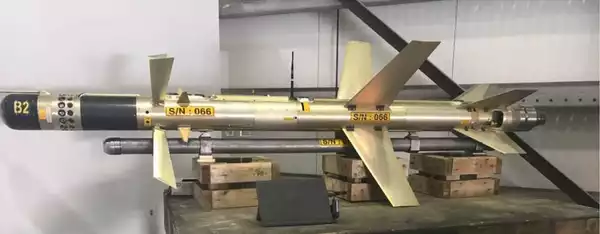
The missile combines the qualities of an anti-aircraft missile and loitering ammunition. Once fired, it seeks out targets autonomously. This means the launch site does not need a radar fix on the target beforehand.
The Saqr 358 has an approximate length of 10 feet and a diameter of 6 inches. Its total weight is 110 pounds, and capable of flying from 10km to 100km. Its maximum speed is not published, but its jet engine is rated for 0.8 Mach (613 mph) at full thrust. This is too slow to intercept most manned fighter aircraft but is fast enough to intercept helicopters and many drones.
It can be launched from a simple rail mounted to the ground or a truck. The long tube suspended below the missile is a solid-fuel “booster” to get it up to speed and altitude before it falls away.
It's reported to have downed an American MQ-9 Reaper drone over Yemen on November 8, 2013.
The Houthis in Yemen also assemble many of their own missiles using components acquired from Iran, China, or indirectly from Western sources.
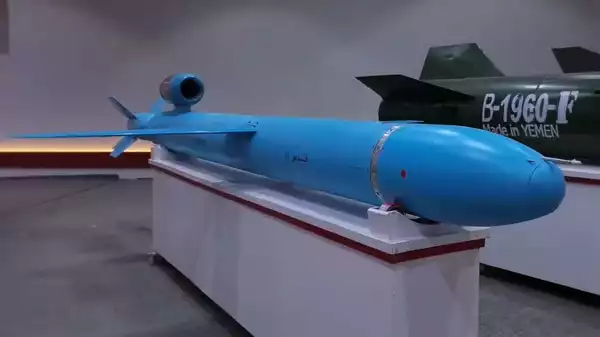
We're going to look at some of these components from the West.
Engine
The most expensive parts of the drone is its engine and warhead. There are a few manufacturers of jet engines suitable for cruise missile applications.
AMT Netherlands b.v. supplies small gas turbine jet engines for model aircraft applications, but their larger engines can power drones. Here's a table of their three most powerful turbines and retail costs. The thrust is rated in Newtons. To compare, one engine on a light business jet, such as a Cessna CitationJet, develops about 10,000 Newtons of thrust.
| Turbine | Thrust | Cost |
|---|---|---|
| Titan | 392N | $11,638 |
| Nike | 784N | $28,541 |
| Lynx | 1,569N | $54,126 |
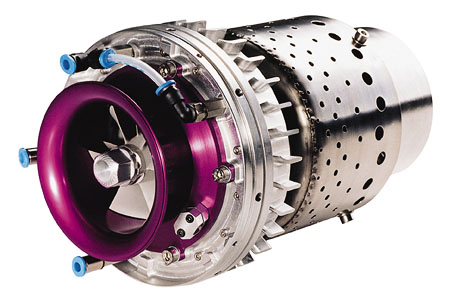
There will need to be a kerosene fuel supply onboard. The Titan consumes 36 ounces per minute at full thrust. The Nike consumes 65.25 ounces. The Lynx consumes 127 ounces. Fuel consumption is reduced at lower thrust, so a "loitering" drone running on minimal thrust can remain on station until the fuel runs out.
The company says that engines sold outside the European market is controlled by an export license, so they believe their engines do not power drones used in the Middle East conflicts.
PBS Velká Bíteš is a Czech company that manufactures a line of turbine engines ranging from 435 to 3,400 Newtons. The 1,250 Newton TJ100 costs $69,500 for quantity one.
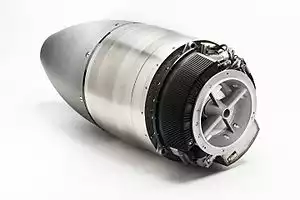
PBS engines also have generators that provide electrical power. The TJ100 supplies 750 watts. This is useful for drones that linger for long periods and can't rely on a battery source.
Watch the demo of the TJ-40-G1 engine below and keep in mind that at maximum thrust, the engine's compressor is revolving at 98,000 RPM. For comparison, the engines on a 737 MAX jetliner have compressors that revolve at up to about 20,000 RPM.
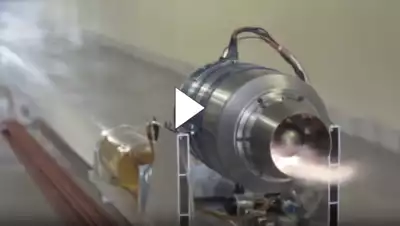
The TJ40-G1 is a 395 Newton engine whose quantity-one cost is $18,900. The company didn't respond to our query about whether their engines are used in Middle East drones, and they look very much like the drone photos. PBS is likely one of the primary suppliers.
Inertial Measurement Units
A drone needs to know its location, heading, orientation, altitude, etc. An Inertial measurement unit is used to provide this information. Here's an example of the MTI-100 IMU product from Movella. This device costs US$1,809.
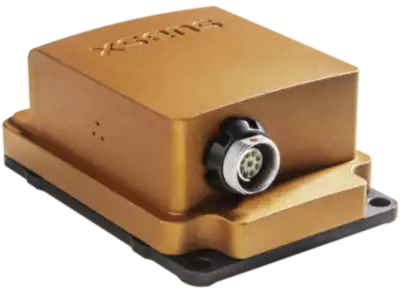
Another manufacturer is NavtechGPS. Their Vectornav VN-100 product costs about $500.
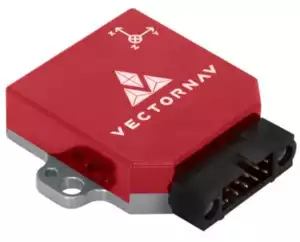
It's possible to reduce this cost by using inexpensive sensors and building your own IMU that has only the functions you need.
Servo motors
Drones have movable fins that control the drone's direction of travel. These fins are moved using servo motors. Iran has used Tonegawa Seiko SSPS 105 servo motors in some of their drones. These can be purchased for $229. A drone likely needs two or four of these.
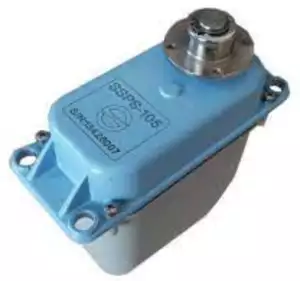
Proximity Fuze
A proximity fuze detonates an explosive device automatically when it approaches within a certain distance of its target. Modern drones tend to use optical proximity fuzes. The unit below is from Excelitas Technologies but there are other companies. Cost is around $100.
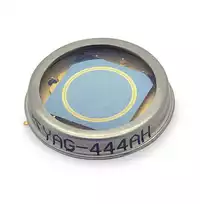
Note that in the photo of the Iranian 358 missile below, multiple optical fuzes surround the missile's perimeter so the target can be detected regardless of the drones position with respect to the target.
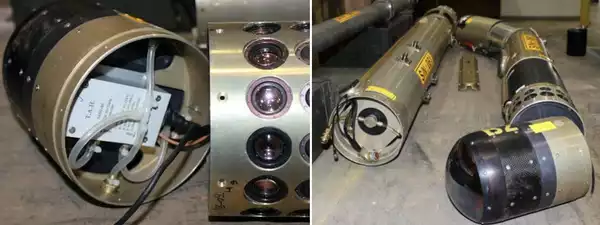
Computer
The computer coordinates the activities of the drone so it accomplishes its mission. Tiny computers like the Arduino and Raspberry Pi cost under $100. The Arduino Uno below costs about $28.
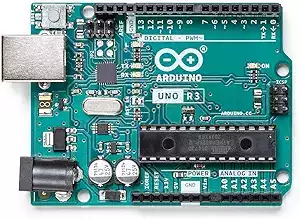
It's possible that these inexpensive computers don't offer sufficient real-time performance for particular drone applications. In that case, computers/processors better suited to real-time can be used and still be inexpensive. Texas Instruments processors have been mentioned in literature discussing Iranian weapons.
Warhead
The one part of a drone that cannot be easily acquired is the warhead. The warhead used by some of the larger Iranian drones is shown below, removed from its casing. It is a cylinder approximately 20 x 6.2 inches. The Saqr 358 uses a somewhat smaller warhead.
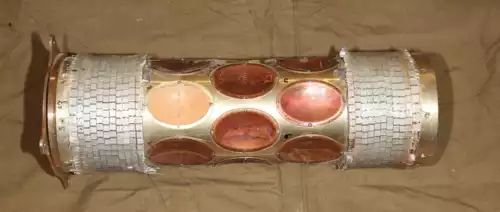
Here's what the warhead looks like when it's in its steel casing. The 0.25-inch-thick steel casing allows it to penetrate structures before detonating.
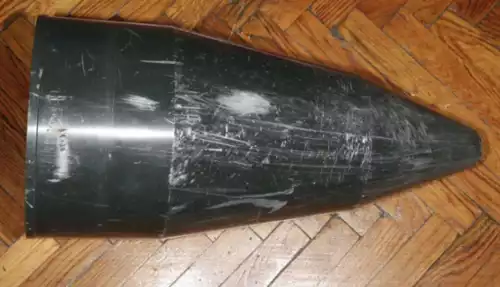
Manufacturing site
Iran has more than one manufacturing site for missiles and drones. One site is the Imam Ali military base in the eastern Syrian town of Abu Kamal, near the border with Iraq (34.412483901, 40.87532381). This site has been struck by the U.S. and Israel a few times. Since then, tunnels have been built to move the manufacturing underground.
Sources
Houthi Drone And Missile Handbook
How a Harmless Japanese Consumer Technology Found Its Way to Military Drones Overseas
Multipurpose Iranian drone warheads used in Ukraine
How Many Revolutions Do Different Aircraft Engine Types Complete Per Minute?
U.S. MQ-9 Reaper Drone Shot Down By Yemen’s Houthi Rebels
MQ-9 Reaper drones among most accident-prone in Air Force
Wikipedia: Imam Ali military base
Iran is building tunnels in Syria near Iraq border for weapons